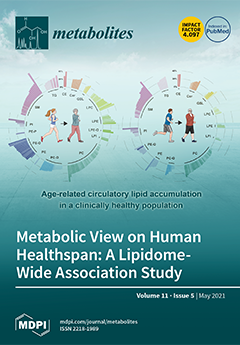Excessive use of antibiotics has detrimental consequences, including antibiotic resistance and gut microbiome destruction. Probiotic-rich diets help to restore good microbes, keeping the body healthy and preventing the onset of chronic diseases. Honey contains not only prebiotic oligosaccharides but, like yogurt and fermented
[...] Read more.
Excessive use of antibiotics has detrimental consequences, including antibiotic resistance and gut microbiome destruction. Probiotic-rich diets help to restore good microbes, keeping the body healthy and preventing the onset of chronic diseases. Honey contains not only prebiotic oligosaccharides but, like yogurt and fermented foods, is an innovative natural source for probiotic discovery. Here, a collection of three honeybee samples was screened for yeast strains, aiming to characterize their potential in vitro probiotic properties and the ability to produce valuable metabolites. Ninety-four isolates out of one-hundred and four were able to grow at temperatures of 30 °C and 37 °C, while twelve isolates could grow at 42 °C. Fifty-eight and four isolates displayed the ability to grow under stimulated gastrointestinal condition, at pH 2.0–2.5, 0.3% (
w/
v) bile salt, and 37 °C. Twenty-four isolates showed high autoaggregation of 80–100% and could utilize various sugars, including galactose and xylose. The cell count of these isolates (7–9 log cfu/mL) was recorded and stable during 6 months of storage. Genomic characterization based on the internal transcribed spacer region (ITS) also identified four isolates of
Saccharomyces cerevisiae displayed good ability to produce antimicrobial acids. These results provided the basis for selecting four natural yeast isolates as starter cultures for potential probiotic application in functional foods and animal feed. Additionally, these
S. cerevisiae isolates also produced high levels of acids from fermented sugarcane molasses, an abundant agricultural waste product from the sugar industry. Furthermore, one of ten identified isolates of
Meyerozyma guilliermondiii displayed an excellent ability to produce a pentose sugar xylitol at a yield of 0.490 g/g of consumed xylose. Potentially, yeast isolates of honeybee samples may offer various biotechnological advantages as probiotics or metabolite producers of multiproduct-based lignocellulosic biorefinery.
Full article






